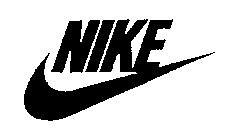Often when looking to register a trademark, we have to discuss registering a word mark versus a logo. Clients often default to registering words in a very specific font. However, that locks the mark into that font. Whereas, if we register it as a word mark, then a change in font doesn’t destroy the registration.
When we register a word mark, the use of those words, regardless of font or associated logo, is covered by the registration. However, if a mark is registered as a logo, the protection of the words was yoked to the logo. New logo or font means no protection via the federal registration. You still have common law rights in the words, but no longer does the federal registration apply outside of how it looks in the registered logo.
For example, Nike, Inc. has a quite a few trademark registrations as you can imagine. Let’s pretend the mark isn’t famous so we’ll ignore the rules that go with famous marks. Given that, there is the swoosh logo. Some registrations are just the “swoosh”:
Others include the word NIKE such as:
If you are using a word similar to “Nike” without a rounded checkmark on athletic gear, then you may have a good argument that a client is not likely to be confused because a client connects the word with the swoosh and maybe even a specific block or cursive font provided. But if you use a word similar to “Nike” written in cursive with a rounded checkmark on athletic gear, these will be likely used in the lawsuit filed against you.
But what if you aren’t “swooshing” your “Nike”? They have plenty of registrations just on the word “Nike” not tied to any specific design or font for retail stores, shoes, sunglasses, apparel and the like. It doesn’t matter if it is in block letters, script, or something new. If you put “Nike” on a running shoe, be prepared for a letter at a minimum.
Now the Nike Factory Store foregoes the swoosh but specifically picks a font.
If you use a word similar to “Nike” for a store in Comic Sans, you may raise the ire of graphic designers, but you also have an argument that given this registration, customers are not likely to be confused because they connect the clean, sleek lines above and recognize immediately that the same company that uses this font would never use Comic Sans.
Therefore, when looking at registering a mark, consider if it is words, the look, or a specific design that is the most important. Then register accordingly. And if you have a budget as big as Nike, Inc., you can have just as many registrations as you have variations.





